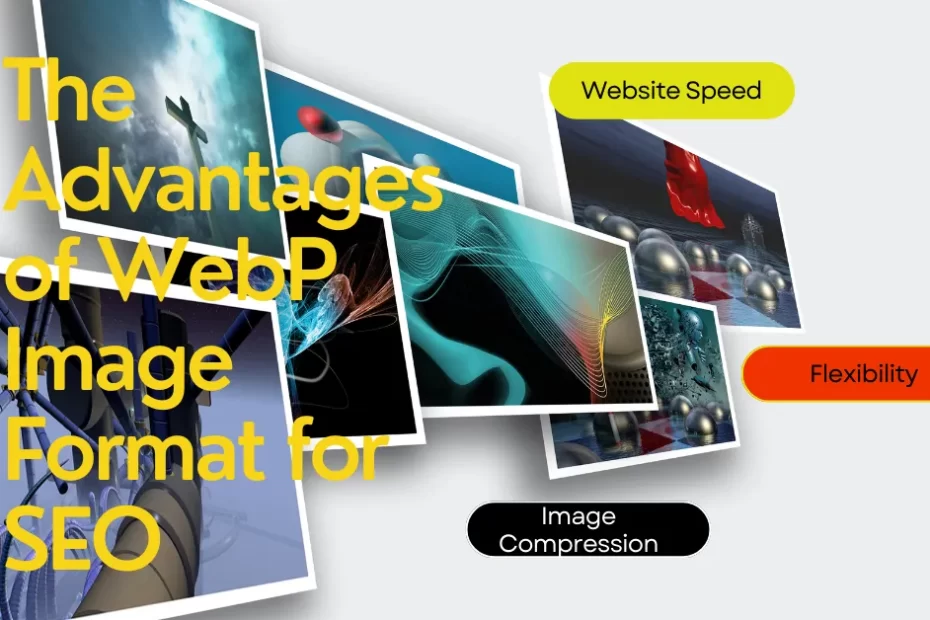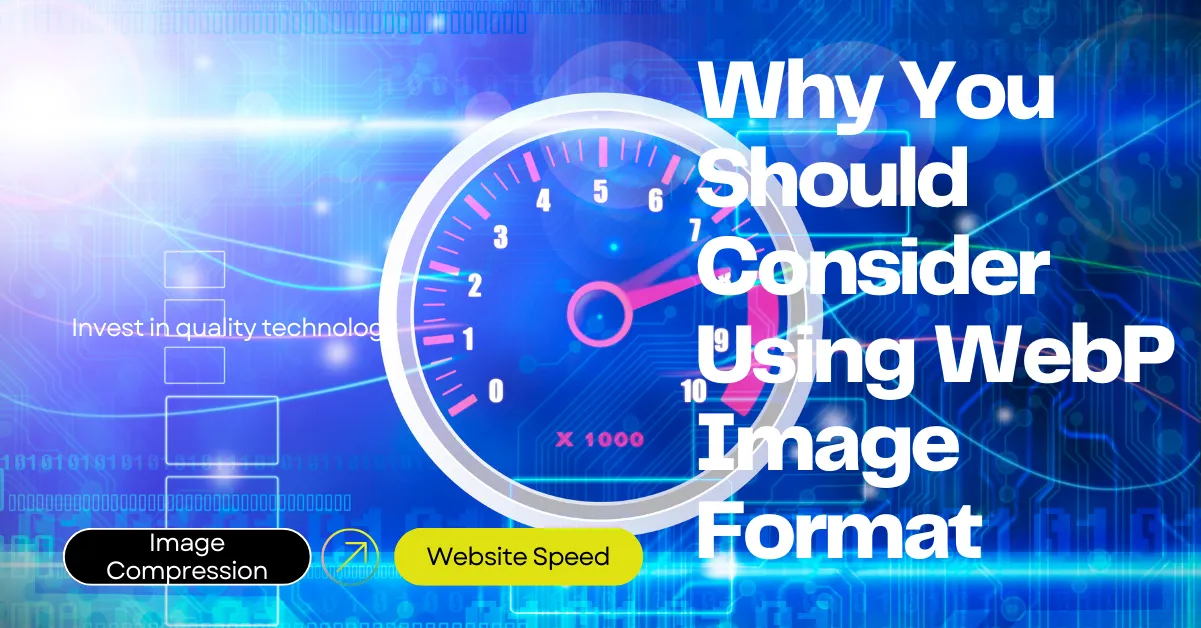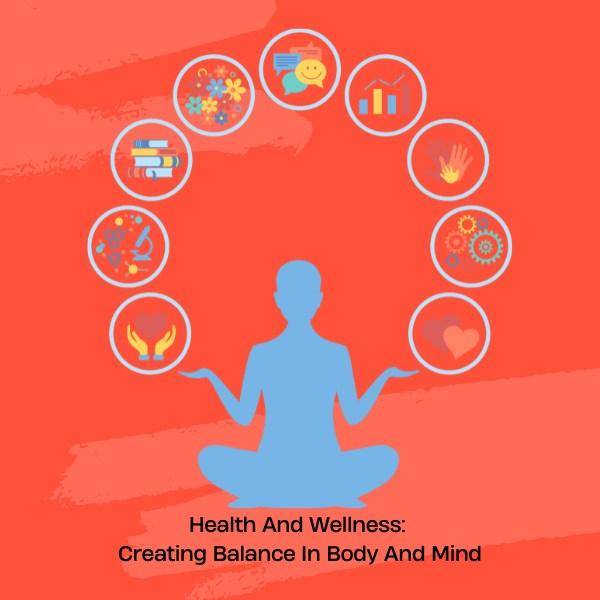WebP is a modern image format developed by Google that offers superior compression and smaller file sizes than traditional image formats such as JPEG and PNG. This makes it an excellent choice for website owners who want to improve website speed and reduce bandwidth usage.
- The Advantages of WebP Image Format for SEO
- SEO Benefits of Using WebP Image Format
- How to Convert Your Images to Webp Format in 3 Simple Steps
- Source & Credits:
- To Stay Ahead: Innovative Marketing Techniques
- Health And Wellness: Creating Balance In Body And Mind
- Healthcare Innovation: Turning Challenges into Solutions
Here are some reasons to consider using WebP for your website’s images.
The Advantages of WebP Image Format for SEO
The WebP image format benefits website speed and bandwidth usage, and can improve your website’s search engine optimization (SEO). Here are some advantages of using WebP image format for SEO.
Better Image Optimization
- Higher quality images
- Smaller file sizes
- Faster load times
Higher Quality Images – Enhanced Visual Quality
WebP also offers enhanced visual quality compared to image formats like JPEG and PNG. Lossy compression ensures that all unnecessary data is removed from images, providing superior visual fidelity and sharper details than standard image formats.
WebP images offer higher-quality images at smaller file sizes than traditional image formats, making them ideal for high-resolution photos that require maintaining image quality.
Smaller File Sizes – Lesser Storage Space Usage
Unlike other image formats, WebP employs both lossy and lossless techniques, allowing it to use less storage space while compressing your images without sacrificing quality or detail. This reduces the overall weight of the files being served—especially beneficial when transferring pictures over the Internet or hosting them on a server with limited capabilities.
Smaller file sizes result in faster load times and reduced bandwidth usage, improving website speed and user experience. The images are up to 34% smaller than equivalent JPEG images and up to 50% smaller than equivalent PNG images, resulting in reduced bandwidth usage and lower hosting costs.
Faster Load Times – Improve Website Loading Times
One of the most significant advantages of using WebP as an image optimization tool is that it dramatically reduces website loading times. It supports lossless formats, which compress your images at a higher rate than traditional image optimization tools, and even further reduce file size without sacrificing any quality. This ultimately leads to faster loading speeds for your web pages.
Faster load times can lead to improved user engagement and a lower bounce rate, which are crucial for SEO. WebP images load faster than traditional image formats, resulting in a better user experience and improved website speed.
SEO Benefits of Using WebP Image Format
| Feature | Description |
|---|---|
| Improved Page Speed | Faster load times directly enhance user experience and support better search engine rankings by reducing bounce rates and increasing session duration. |
| Advanced Transparency Features | WebP supports 24-bit RGB with 8-bit alpha channel for smoother gradients and realistic visuals, enhancing overall image quality with less editing. |
| Better User Experience | Enhanced image compression leads to smoother site navigation, reduced load times, and improved visitor engagement across all devices. |
| Improved Search Engine Rankings | Website speed is a critical SEO factor. WebP images help achieve higher rankings by reducing image weight and optimizing delivery. |
| Improved Browser Compatibility | Supported by major browsers like Chrome, Firefox, Safari, Opera, and Edge. Ensures a wide reach without rendering issues or plugin dependencies. |
| Flexible Optimization for All Devices | WebP supports adaptive image delivery across desktop and mobile. Maintains clarity and color accuracy while reducing resource load. |
| Reduced File Sizes with High Visual Quality | WebP delivers smaller file sizes than JPEG or PNG while preserving sharpness and color depth, improving speed and storage efficiency. |
| Free & Easy Image Format Conversion | Easily convert JPG or PNG to WebP using free online batch tools. Simplifies workflow and supports cross-platform collaboration. |
How to Convert Your Images to Webp Format in 3 Simple Steps
JPG/PNG to WebP Format & Resizer
Step 1: Convert PNG or JPG to WebP
Step 2: Select size to Resize - Press Original Size to change
Step 3: Press Converted file to download
The JPG/PNG to WebP and Size Resizer is a web-based application that allows users to convert their images from JPG or PNG to WebP format. This modern image format offers superior lossless and lossy compression for web images.
The application is straightforward to use. Users can upload multiple images by clicking on the file input field. The application supports only JPG and PNG formats for conversion.
In addition to the conversion feature, the application resizes the image. Users can select from predefined resize options 30%, 50%, and 80% of the original size or keep the original size. The resizing happens before the conversion to WebP format.
Once the images are uploaded and the desired resize option is selected, users can start the conversion process by clicking the “Convert” button. The application will convert and resize each image individually.
After the conversion, the application provides download links for each converted image. The links are displayed in the application’s output section. Users can click on each link to download the corresponding WebP image.
This application is a valuable tool for web developers and designers, helping to optimize images for the web and reduce load times, thereby improving page performance.
Boost Website Speed: Beyond WebP – Key Factors for Faster Loading
Besides using the WebP image format, several other factors can contribute to making a fast website. Here are some additional techniques and optimizations:
Caching: Implement browser caching to store static files, such as images, CSS, and JavaScript, on the user’s device, thereby reducing the need for repeated requests. This makes subsequent page loads faster, as the cached files are retrieved locally instead of being downloaded again.
Minification: Minify your HTML, CSS, and JavaScript files by removing unnecessary spaces, line breaks, and comments. This reduces file sizes and improves loading speed.
Content Delivery Network (CDN): Utilize a CDN to distribute your website’s content across multiple servers in different geographic regions. This helps deliver content to users from the nearest server, reducing latency and improving loading times.
Compression: Enable compression on your server to reduce the file size transferred from the server to the user’s browser. Gzip and Brotli are commonly used compression methods.
Optimized CSS and JavaScript: Optimize your CSS and JavaScript code by removing unused code, reducing the number of HTTP requests, and placing scripts at the bottom of the page to prevent render blocking.
Lazy Loading: Implement lazy loading for images and videos, loading them only when they become visible within the viewport. This approach improves initial page load times by deferring the loading of non-visible content.
Responsive Design: Ensure your website is responsive and optimized for mobile devices. Responsive design ensures that the layout and content adapt to different screen sizes, optimizing the user experience on various devices.
Minimize Redirects: Avoid unnecessary redirects as they add additional HTTP requests and increase page load times. Redirects should be used sparingly and only when necessary.
Optimized Hosting: Select a reputable and high-performance hosting provider with responsive servers. Consider using a hosting solution optimized for your specific needs, such as a managed WordPress hosting service.
By implementing these techniques, you can significantly improve your website’s loading speed and provide a faster browsing experience for your users. Remember that website optimization is an ongoing process; regularly monitoring and fine-tuning your site’s performance is essential to maintain its speed.
Share this:
- Click to share on Facebook (Opens in new window) Facebook
- Click to share on Pinterest (Opens in new window) Pinterest
- Click to share on LinkedIn (Opens in new window) LinkedIn
- Click to share on X (Opens in new window) X
- Click to share on Tumblr (Opens in new window) Tumblr
- Click to share on Bluesky (Opens in new window) Bluesky





I loved as much as youll receive carried out right here The sketch is attractive your authored material stylish nonetheless you command get bought an nervousness over that you wish be delivering the following unwell unquestionably come more formerly again as exactly the same nearly a lot often inside case you shield this hike